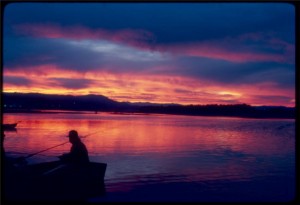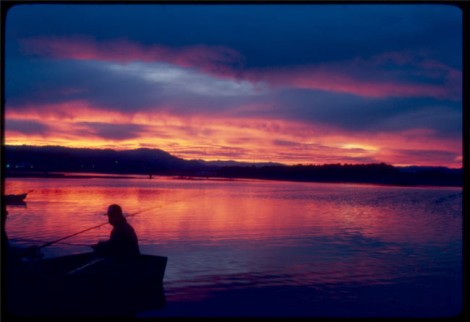‘Rivers of a Lost Coast’ documents the rise and fall of California fly fishing
Fly fishing for steelhead trout doesn’t exactly scream invigorating cinema. But Rivers of a Lost Coast, a new documentary from director Justin Coupe, makes a case that one can find some of America’s pioneer spirit behind the recreational sport.
Using archival images and interviews with lifelong anglers, the 86-minute film tells the tale of northern California’s forgotten rivers and the bountiful fish that used to attract fishermen from far and wide. In their heyday, before a flood, a drought and deforestation changed the landscape forever, the rivers of northern California were some of the most promising waterways in the United States.

Throughout the 1950s, there were so many fishermen trying to get in on the action that the rivers often looked like tidal pools at a water park. Anglers, wading out to their knees, were forced to carefully cast their lines as they elbowed against the competition.
Much of Rivers of a Lost Coast details the hotshot fly fishermen during this Golden Era. Bill Schaadt emerges at the top of the heap. He was a dedicated man with a sharp eye for reeling in the big trout; he was someone who was forever tied to the rivers of northern California, even attracting the editorial interest of Sports Illustrated.
One of the weaker points of the documentary is that the film seems unsure of what to do with Schaadt’s legacy. Is this a film about the rivers or the men? Yes, the narration by Tom Skerritt can mention both, but without focusing on one or the other, the two storyliness feel a little spare.
Rivers of a Lost Coast will appeal mostly to fishermen (and women, of course, though none are featured in the film). Those who receive their “high” from casting a line in the water, as one interview subject puts it, will relish the chance to relive the Golden Era of California fly fishing. Others may wonder what all the hype is about. After all, the documentary’s scope is relegated to a small section of America. This isn’t the story of fly fishing in its totality; it’s the story of one region and its competitive fly fishermen.
Still, it can be enthralling to revisit these old yarns on the banks of the Eel and Russian rivers. The sport of fishing lends itself nicely to a mythical cinematic presence (this is probably why reality programming like Deadliest Catch and Whale Wars has thrived). Stories about the one that got away and the competition to snag the biggest catch are the stuff of local legend, and now thanks to Rivers of a Lost Coast, the devoted can enjoy the rivalries and the beautiful landscape all over.
One important feature that is missing from the documentary is extended footage of what these rivers look like today. Most of the natural footage is gleaned from archival still photography, which sets the historical mood, but also limits the documentary to a two-dimensional feel. Perhaps it’s wishful thinking, but it would have been great to see videos of these old-timers pulling in monster trout.
Rivers of a Lost Coast brings to life a forgotten era when angling wasn’t merely a means to grab some fish. The sport was a means to live one’s life. That the documentary falls somewhat short in its ambitions was probably inevitable.
By John Soltes / Publisher / John@HollywoodSoapbox.com




Where can I rent this film?
Great question. I’m sure it’s available via Netflix for rental. To buy it and for more information, click here: http://www.riversofalostcoast.com/